As a commercial property manager or asset manager, the appearance of your landscape is more than just aesthetics—it’s a reflection of your brand, your tenants’ satisfaction, and your property’s value. So, when unsightly brown patches start appearing in your lawn, it’s not just a cosmetic issue—it’s a call to action.
At Rubicon, we specialize in commercial landscape maintenance, and one of the most common concerns we hear from clients is:
“What’s causing those brown spots in my lawn?”
The answer isn’t always simple. Brown spots can stem from a variety of issues, each with its own visual clues, causes, and solutions. In this post, we’ll walk you through six of the most common types of brown spots we see on commercial properties—and how to address them effectively.
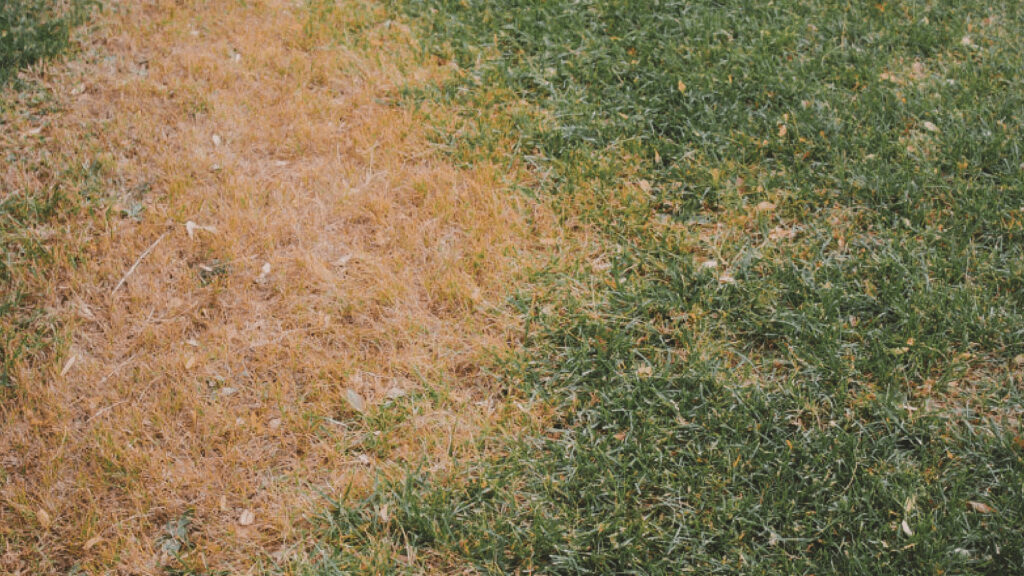
Large, irregular patches of dry, straw-colored grass. The blades may feel crispy and the soil beneath is often hard and dry.
Even with irrigation systems in place, inconsistent watering, poor sprinkler coverage, or extreme heat can lead to drought stress. Commercial lawns often have microclimates—sun-exposed areas dry out faster than shaded ones.
Rubicon Tip: Our team uses smart irrigation technology to monitor soil moisture and optimize watering schedules—saving water and keeping your lawn green.
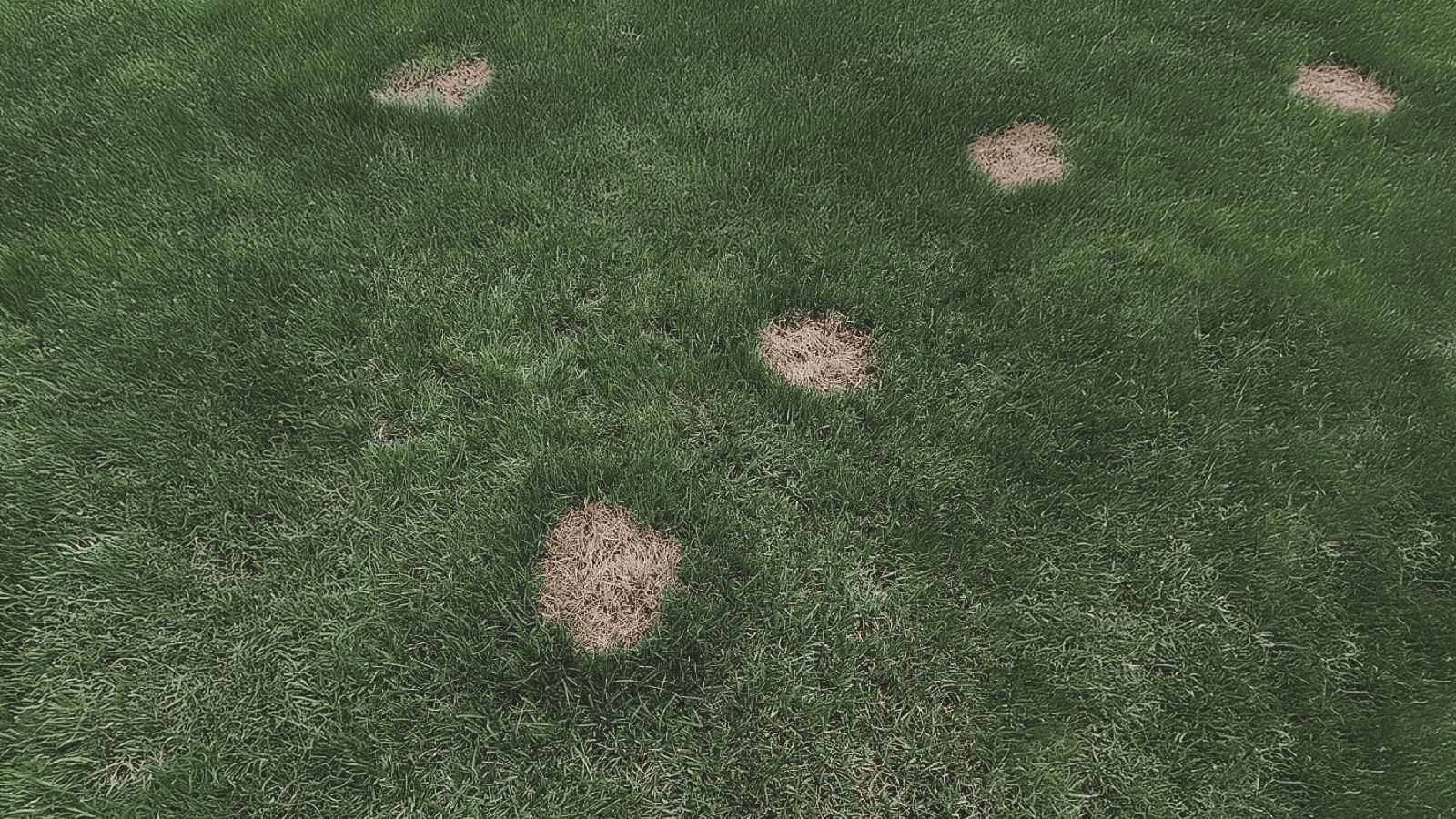
Small, round brown patches with a green ring around the edges. These spots often appear near sidewalks, entrances, or tenant common areas.
Dog urine contains high levels of nitrogen, which can “burn” the grass in concentrated doses. The green ring is caused by diluted nitrogen acting as a fertilizer.
Rubicon Insight: We help design pet-friendly zones with proper drainage and signage to reduce lawn damage.
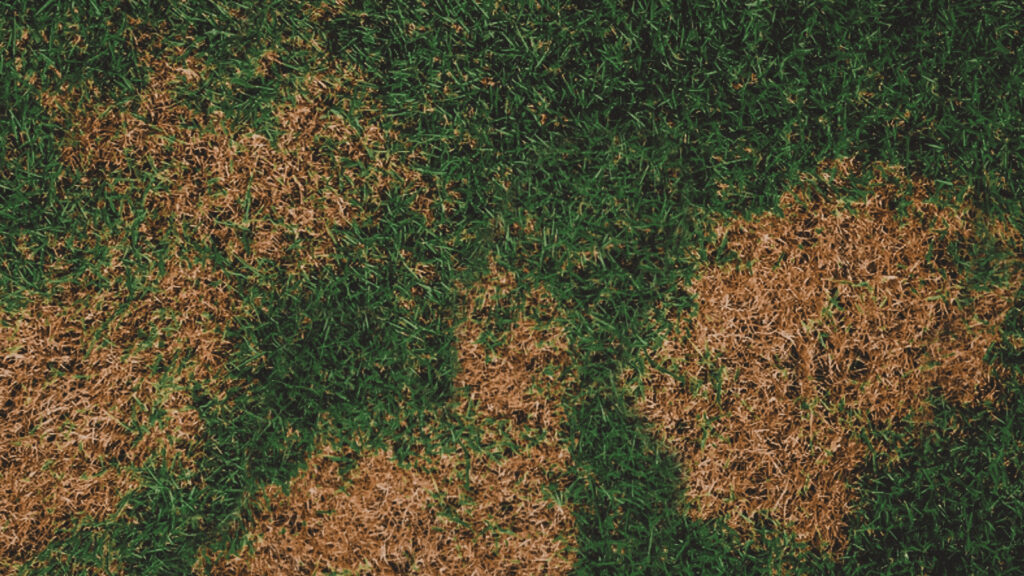
Circular or irregular patches with a smoky, moldy, or slimy appearance. You may see rings (fairy rings), powdery mildew, or thread-like growths.
Fungi thrive in warm, humid conditions—especially when lawns are overwatered or have poor air circulation. Thatch buildup and nutrient imbalances also contribute.
Rubicon Advantage: Our turf specialists diagnose fungal issues early and implement eco-friendly treatment plans to restore lawn health.

Patches of thinning or dead grass that can be pulled up easily, revealing chewed roots or visible grubs beneath the surface.
Common culprits include white grubs, chinch bugs, and sod webworms. These pests feed on grass roots or blades, weakening the turf from below.
Rubicon Solution: We offer integrated pest management (IPM) programs that minimize chemical use while protecting your landscape investment.
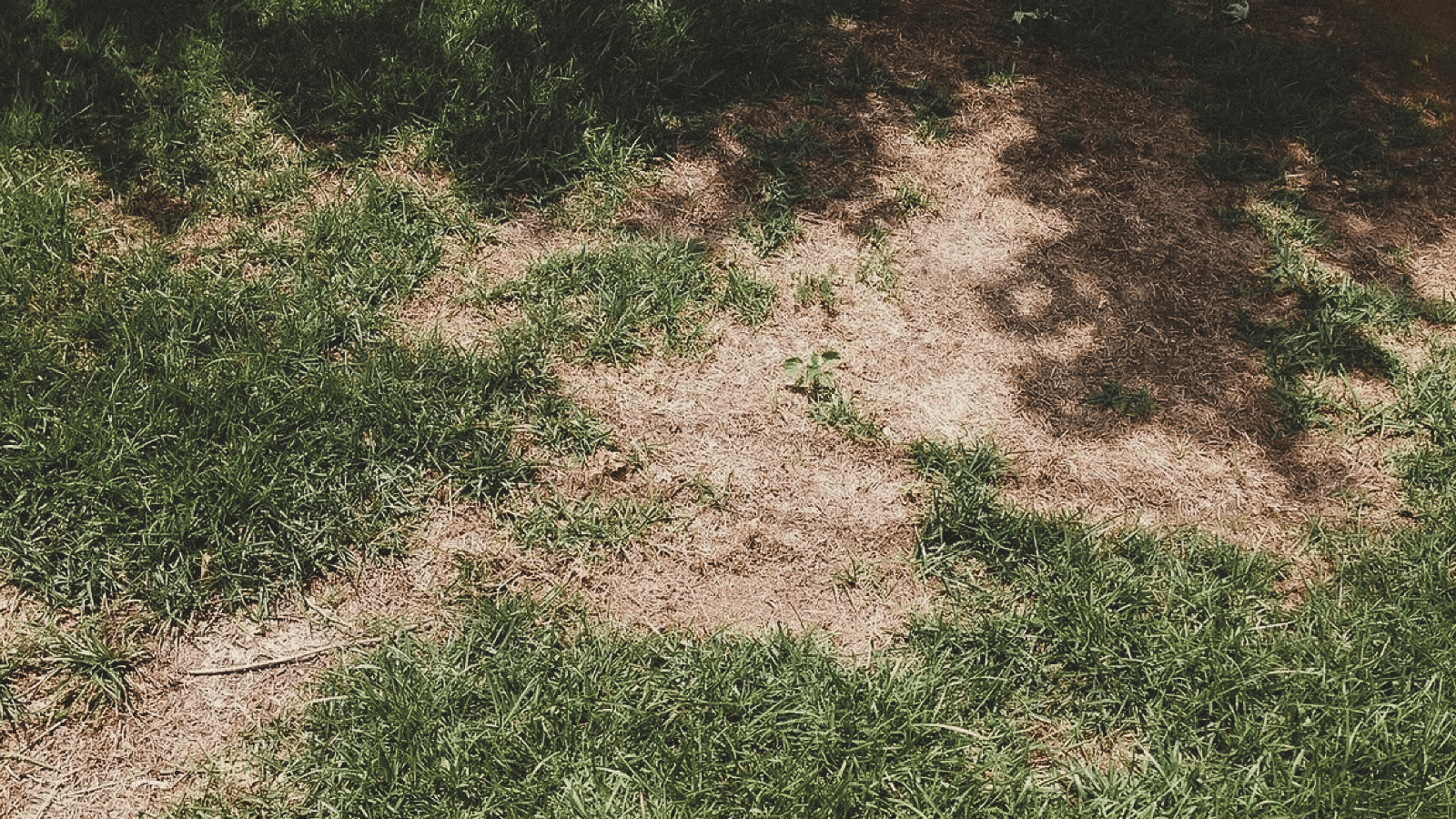
Brown or thinning areas that persist despite watering. The soil may feel hard, and water tends to run off rather than soak in.
Thatch is a layer of dead grass and roots that builds up between the soil and the green blades. Compacted soil prevents air, water, and nutrients from reaching the roots.
Rubicon Service: Our seasonal aeration and soil health programs rejuvenate tired lawns and promote deeper root growth.
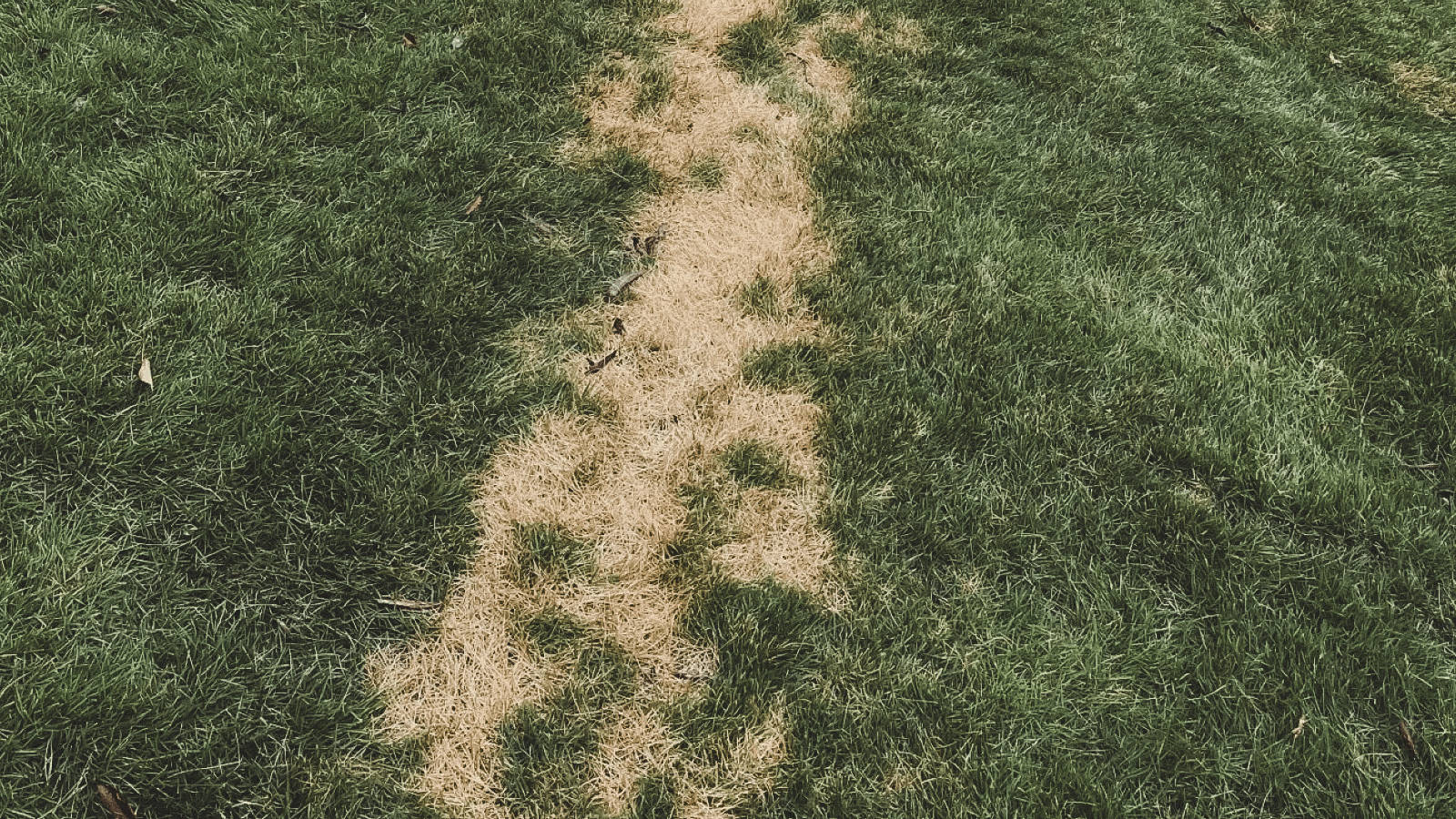
Bright yellow or brown patches that appear shortly after fertilizer or herbicide application. The edges may be sharply defined.
Over-application or uneven distribution of lawn chemicals can “burn” the grass. This is especially common with high-nitrogen fertilizers or weed control products.
Rubicon Precision: Our licensed technicians use calibrated equipment and site-specific plans to ensure safe, effective applications.
Brown spots are more than just an eyesore—they’re a signal that your landscape needs attention. Whether it’s a watering issue, pest problem, or soil imbalance, identifying the cause early can save you time, money, and tenant complaints.
At Rubicon, we partner with commercial property managers and asset managers to deliver proactive, high-quality lawn care services that keep your grounds looking pristine year-round.
Schedule a free landscape health assessment with Rubicon today and let our experts help you turn those brown spots green again. Call 801.928.2800 to schedule your health assessment.